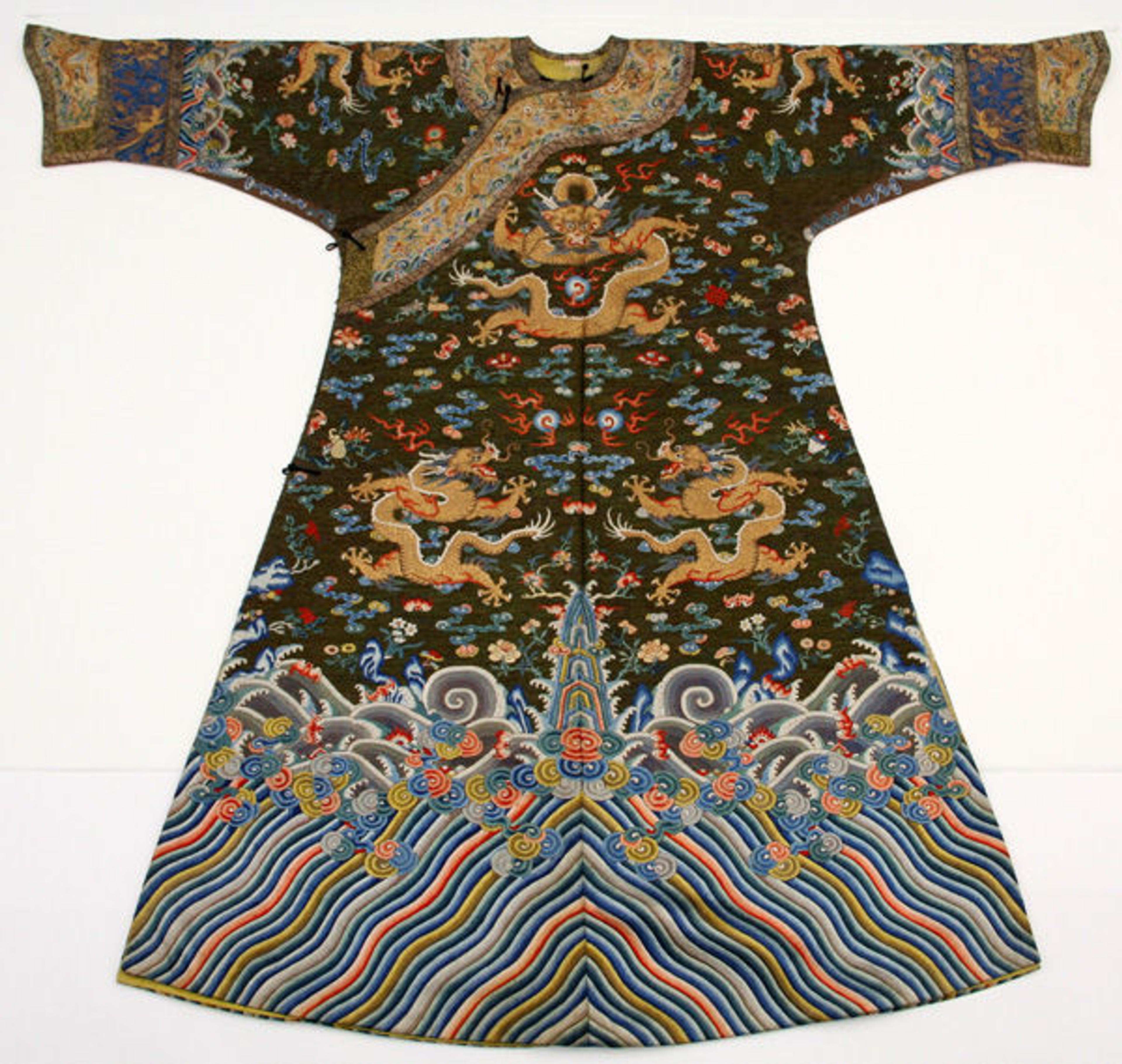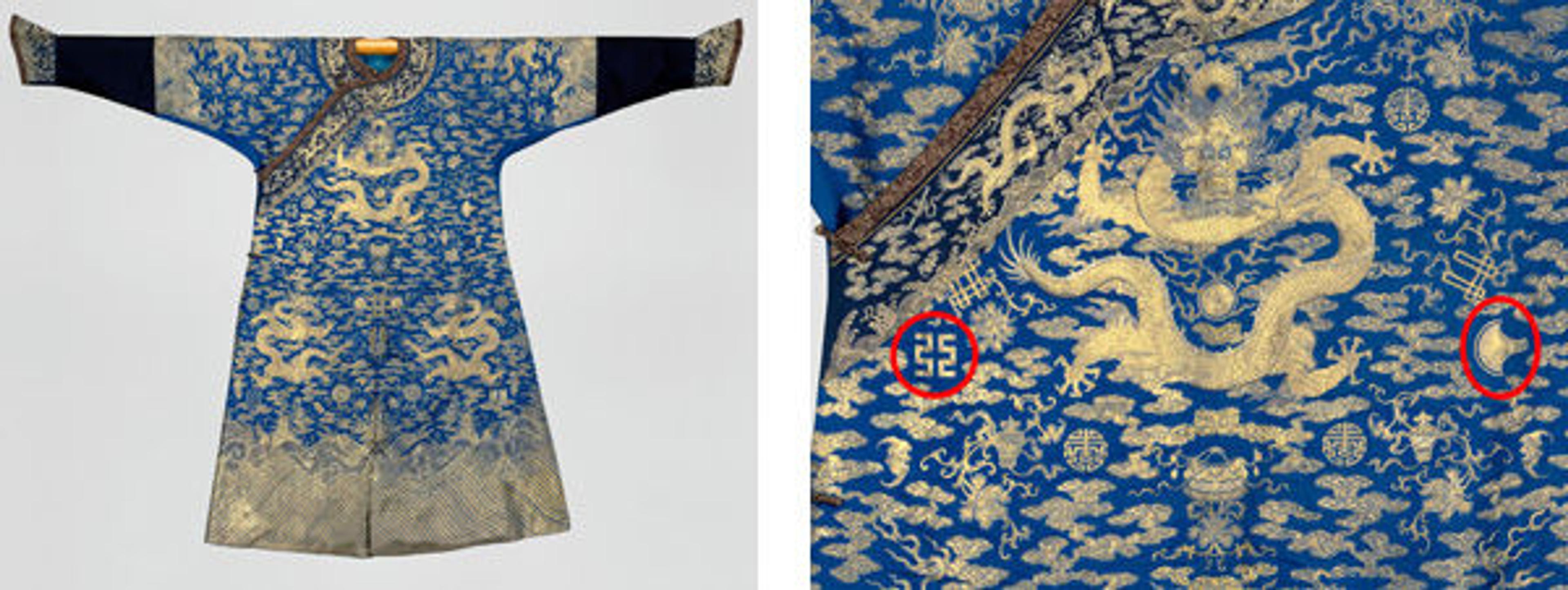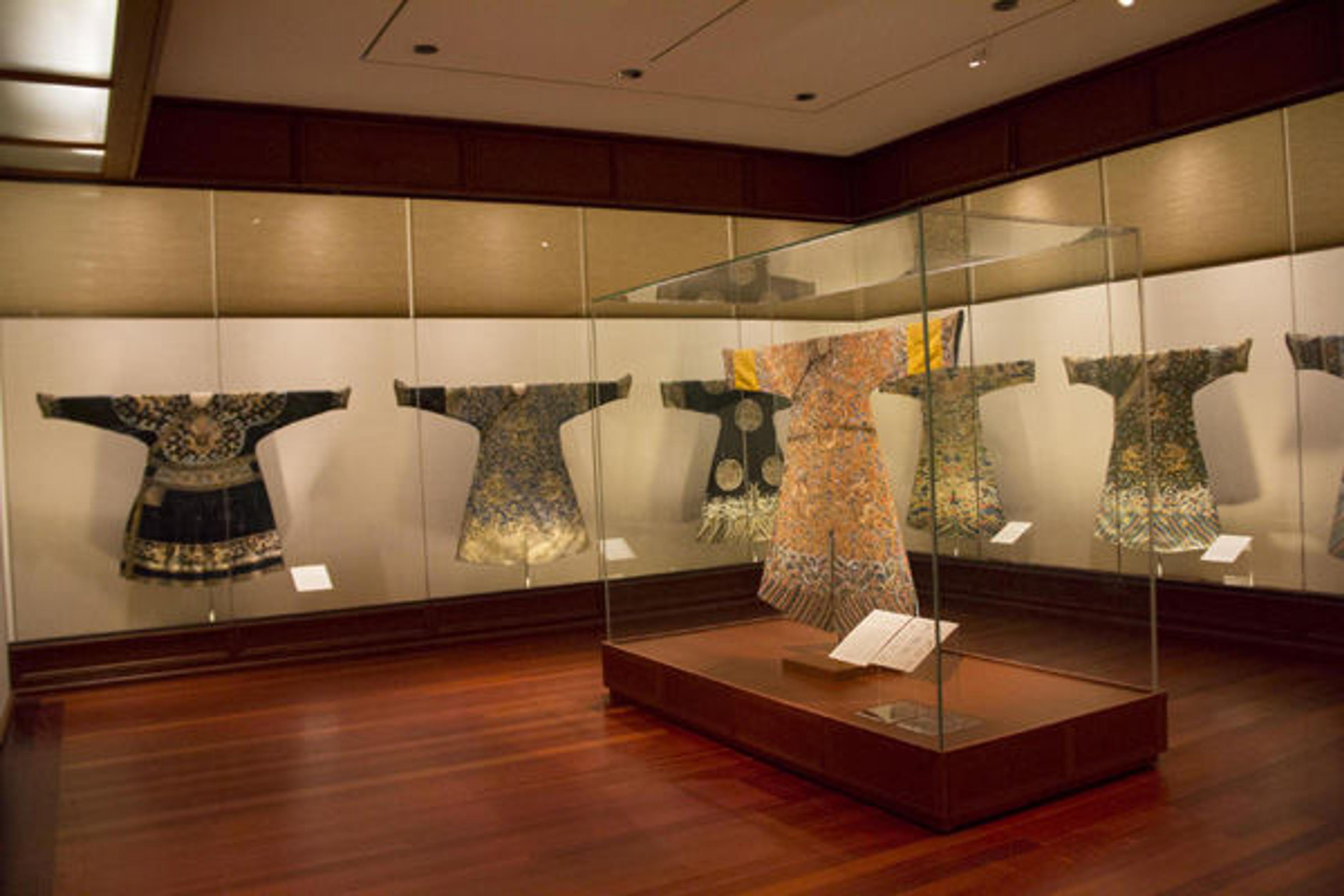
Festival robe. Qing dynasty (1644–1911), 18th century. The Metropolitan Museum of Art, New York, Bequest of William Christian Paul, 1929 (30.75.79). Photograph courtesy of Department of Textile Conservation
«The lush green hue of this Chinese court robe was created using peacock feathers, which were twisted onto silk threads before weaving the garment. The use of such peacock-feather threads is thought to have begun in China in the fifth century. However, the first preserved examples date to the early seventeenth century, and costumes woven with peacock feathers are extremely rare. This robe, which has not been displayed for more than fifty years, is now on view in Power and Prestige: Chinese Dragon Robes, 18th–21st Century.»

Left: Detail of dragons on front and shoulders of robe; Right: Detail of "hidden" ninth dragon not visible when robe is worn. Photographs courtesy of Department of Textile Conservation
The use of such extraordinary threads illustrates the luxurious lifestyle of the Chinese court during the Qing dynasty (1644–1911), when every piece of clothing or jewelry also signified some aspect of status and rank. The five claws of the dragons, which were woven using threads wrapped with gold, indicate that the robe was worn by a member of the imperial family. The nine dragons on the robe—three at the front, three at the back, two on the shoulders, and one hidden inside the robe—tell the same story. The flaming pearl in front of the dragons and the bats and clouds that surround them are auspicious motifs found throughout Chinese art. However, the lack of a certain group of twelve emblems, including an axe and the double "fu" character (seen on another robe in the exhibition) indicates that the peacock feather robe was not worn by an emperor.

Emperor's Twelve-Symbol Robe. Qing dynasty (1644–1911), second half of the 18th century. The Metropolitan Museum of Art, New York, Gift of Lewis Einstein, 1954 (54.14.2). Right: Detail showing "fu" emblem (left) and axe
In addition to the axe and the double "fu," you can see the other imperial emblems (sun, moon, constellation, dragons, flowery bird, two sacrificial cups, water weed, millet, and fire) on two of the robes on view in the exhibition (Gallery 220). The third-floor galleries are a bit hidden away, but these spectacular robes on view are worth the time and effort.

View of Power and Prestige: Chinese Dragon Robes, 18th–21st Century